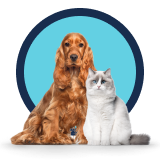Protect your dog or cat from the inside with Advance
Advance has been caring for and protecting dogs and cats with quality nutrition developed by our team of veterinarians for over 25 years. Discover our ranges and find the recipe that suits your dog or cat best.
Do you have a
FIND THE FOOD THAT BEST SUITS ITS NEEDS







